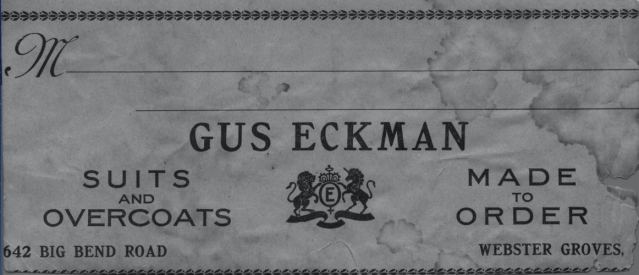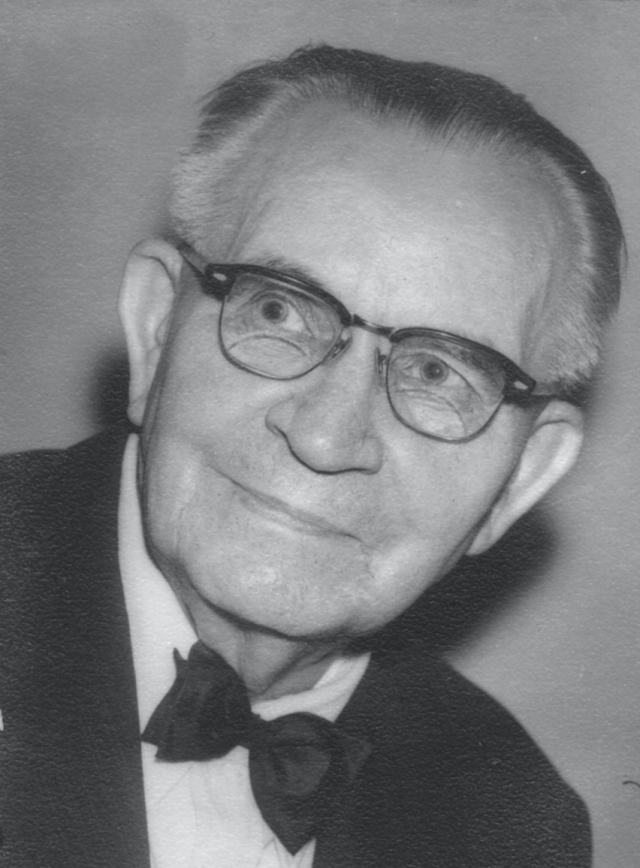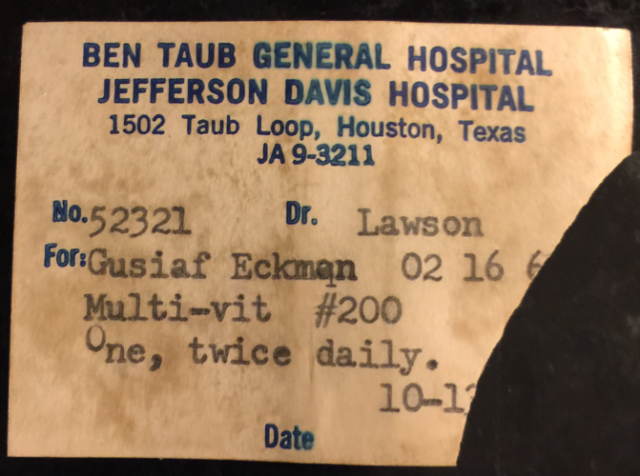
One hundred and sixteen years ago today, my great grandfather arrived in the United States and disembarked at Ellis Island. He was born in Bjurholm, Sweden on 28 May 1877. The Swedish church records show he left his home town bound for Nordamerika on 30th November 1900. The photo above was taken shortly before he left Sweden and below is a photo of the family church in Sweden.

He first traveled by boat from Gothenburg, Sweden to Grimsby, England where he arrived on 12th of December aboard a ship called ‘Rollo’. His trip across the Atlantic then took seven days. The SS St Louis departed from Southampton England on the 15th of December with Gustaf in third class steerage. The ship manifest reports him as single, in good health and able to read and write. He had no relatives in the United States and listed Springfield, Massachusetts as his final destination. He had $30 in his possession on arrival and his calling is listed as tailor.

By 1903 he had made his way to Asheville, North Carolina with a woman he had met in New York. I don’t think he ever went to Springfield. The young woman’s name was Hilda Mathilda Petersdotter she was also a Swede from Karlskrona. They were married on the 10th of May. However, they did not stay put in North Carolina for long as the young couple moved to Hot Springs, Arkansas by 4th October 1904 when their first child, a daughter, Elsie Elvira was born.

The family moved again shortly after Elsie’s birth due to a destructive fire and they settled in St. Louis, Missouri where 3 more children were born – Ann Marie on 8th April 1910, my grandfather Walter Gustaf on 20th June 1912 and Victoria Hilda on 24 August 1914. The family lived in the Webster Grove subdivision where Gustaf had his own tailor shop at 646 Big Bend Rd. In that shop a customer could have suits or overcoats made to order. Ladies and gents garments could also be cleaned, pressed and repaired.


One final journey took place between 1915 and 1917 when the entire family moved to Houston, Texas. Gustaf continued in his occupation as a tailor and he rented a home and store on 610 Dallas Avenue in downtown Houston where the family was located on the 1920 census. They later moved to 48 Austin Street where Hilda also ran a boarding house to supplement the family’s earnings. They are located there on the 1930 census.

Several interesting stories have been handed down about my great grandfather Gus, what his family called him. One is that shortly after arrival in America, Gus changed the spelling of his name from Ekman which is the Swedish spelling and literally means ‘Oakman’ to Eckman which is the German spelling. Eck is German for ‘corner’. Elsie recorded that he was convinced to do this after drinking at a bar with some Germans. It must have occurred shortly after his arrival, probably in New York, because every document I have located in the US lists his name as Eckman except for the SS St. Louis manifest where it is Ekman. Swedish documents also consistently spell his name Ekman and the family of his brother who stayed in Sweden is still named Ekman.
My grandfather told me that he remembered going to Camp Logan in Houston as a youth. He would accompany his father Gus who was at that point a garment inspector for the military. Camp Logan was an Army training camp in Houston during the first world war and was situated on land that is currently Memorial park. My grandfather shared memories of the riot that occurred there in 1917. The riot occurred when black soldiers became angry that one of their colleagues was being imprisoned unfairly in Houston. Camp Logan was also the center point of the outbreak of Spanish influenza in Houston in 1918. One of my grandfather Walter’s most vivid memories in his later life was of being sick with the flu when he was in first or second grade. His family feared for his life according to his account and that is consistent with what we know historically about the Spanish influenza outbreak. Fortunately, after being sick for over a week, he did recover. He remembered his mother Hilda bringing him soup in bed and that soup was the best thing he could ever remember tasting in his life. When he got older and more frail, my grandfather loved to eat soup and my mother would make it for him. Each time he would tell this story he would get a wonderful smile on his face as though he was again tasting his mother’s soup from so many years past.
During prohibition in Houston, Gustaf dabbled in the distillation and sale of illicit alcohol. My father shared with me that his father Walter told him that Gus was once arrested for this activity. The still was reportedly located in the home or at Gus’s shop. I imagine selling hooch was a good way to make ends meet at the onset of the great depression. Gus would also encourage his youngest children Walter and Vicky to sell hamburgers at a stand he built in their front yard. Apparently my great grandfather knew how to hustle for a dollar and wanted to impart this skill to his children. In the photo below the hamburger stand can be seen in front of the house.

Gus’s wife Hilda died on 17 March 1958. Perhaps because he was lonely as an 80 year old widower, Gus became involved with a woman named Johnnie Mae Hackworth from Brenham who was close to 30 years his junior. She had two prior marriages. Her second husband Edwin A. Schafler was a long time railroad executive. Gus married her in November of 1958 just eight months after Hilda’s death. No one has really been able to give me specifics of this marriage but the general concensus among the family seems to be that Johnnie was taking advantage of Gus in some way, perhaps she thought he had money. Johnnie Mae Hackworth was apparently a colorful woman with some unorthodox religious beliefs. She also ran for a number of political offices. Their marriage was very brief and ended in divorce, maybe she quickly realized he didn’t have what she was after. Her papers are collected at the Texas A&M library where the following is written about them –
Hackworth’s papers contain correspondence to and from Hackworth, Hackworth’s notebooks, her various political and religious/prophetic writings, religious and political writings from others that were collected by Hackworth, photographs, and various pieces of ephemera. Notable and predominant among her correspondence are long and rambling letters that Hackworth wrote to political, media and law enforcement figures in Texas as well as on the national level.
My Dad remembers his grandfather having respiratory problems as an older man. Gus wheezed and coughed and had labored respiration at times. Dad also remembers that Gus would smoke something that had a pungent and distinctive odor to it that helped ease his breathing. It may well have been marijuana that Gus was using; that’s what my father thinks. Gus died 10th February 1967 at age 89. That was a little more than a year before I was born. Cause of death on his death certificate is simply listed as arteriosclerotic cardiovascular disease. Perhaps the shortness of breath and wheezing was due to heart failure. Aside from furosemide, a diuretic which was discovered in 1962, there were not many drugs that could effectively treat heart failure at that time. Self treatment with marijuana would not have been an unreasonable remedy. Below is a photo of Gus in his later life.

I do not have any items of value that belonged to my great grandfather Gustaf. I have located documents that give me glimpses into his life and I have the family stories and some old photographs. I do have one cherished item though. It’s a little scrap of paper, just a torn label, but it has significance to me and I want to tell you why.
When my grandfather Walter moved out of his house shortly before his death, we had to clean things out. While I was there helping I came across an old bottle tucked away in the storage room. My grandfather loved to keep old bottles and other items. He was a pack rat and would repurpose things. This particular bottle had paperclips in it. There was a label on it that was slightly torn. When I read the label I was quite surprised. It was a prescription from Ben Taub General Hospital written by a Dr. Lawson. The patient name on the label is Gustaf (misspelled Gusiaf) Eckman. The date is torn but it must have been written in the mid-1960’s. It’s only for a multivitamin to be taken twice daily but that is not what was important to me.

I grew up in Houston and went to medical school at Baylor College of Medicine. I then did my residency in Internal Medicine at Baylor. Much of my medical school training and residency I spent working at Ben Taub which is the primary teaching hospital for Baylor College of Medicine. When I finished my residency I chose to stay at Ben Taub as faculty with Baylor. Next year will be my 20th year to work there. For those of you not from Houston, I will explain a little about Ben Taub. It is the Harris county hospital and it’s structure and operations are funded in large part by tax dollars. It originally opened in May of 1963 in the Houston Medical Center. It is what most people would call a ‘Safety net hospital’ which means it takes care of primarily low-income and exploitable populations, many of whom are immigrants. Sometimes when I tell people I work there I get funny looks like – why would you choose to work there if you are no longer in training? Explaining the appeal isn’t always easy. But there definitely is an appeal and it is tied to that label. The story of my great grandfather helps to explain it.
The label is a touchstone for me. Someone at Ben Taub, probably a training physician, took care of my immigrant great grandfather 50 years ago. Now I take care of immigrants at Ben Taub. In the last few weeks I took care of patients who were born in Mexico, Vietnam, Nigeria, China, Israel and Pakistan. Each has a story to tell and a reason they came to the United States. I get to hear their stories when I have time to listen. How great is that? How important and sacred is that? I feel priveleged by their trust in me.
My co-workers are also an incredibly diverse and international group. Doctors, nurses, radiology techs, respiratory therapists, housekeeping…they come from all over the world. The medical community in the United States is in a leadership position when it comes to diversity and I assure you there is no place as diverse as Ben Taub. It’s a miniature melting pot, a place where many cultures, religions, traditions and cuisines mix and flavor one another.
The label reminds me what I am part of. One day the grandchild or great grandchild of one of those immigrant patients or collegues may be taking care of me. Until then, I want to do my best to take care of them and to learn from them and to absorb what they have to offer. It’s my calling, my purpose, my bliss, my Ānanda.